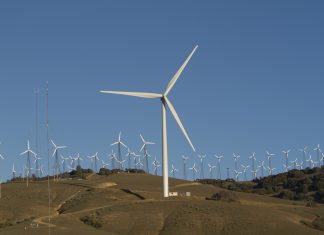Pakistan’s government officials often repeat the same tired line: “Pakistanis don’t pay taxes.” It’s a narrative designed to shame citizens while distracting from the real problem: a government addicted to wasteful spending in one of the world’s poorest countries.
This narrative is repeated so frequently that it has become accepted wisdom. Yet a closer look at the data tells a very different story. Pakistan’s tax-to-GDP ratio is broadly in line with countries of similar income levels. The real problem lies not with citizens but with the state’s inability to control its bloated expenditures and generate sustainable economic growth.
The numbers tell a very different story.
Pakistan vs. SAARC: The reality on taxes
According to the OECD’s Revenue Statistics in Asia and the Pacific (2025) and World Bank data, Pakistan’s tax-to-GDP ratio in 2023 was 10.5%. How does that compare to our neighbors?
| Country | GDP per Capita (USD, 2023) | Tax-to-GDP (%) |
| Pakistan | 1,365 | 10.5% |
| Bangladesh | 2,593 | 7.2% |
| Sri Lanka | 3,799 | 10.1% |
| India | 2,697 | 13.8% |
| Nepal | 1,382 | 22.3% |
| Bhutan | 3,839 | 11.6% |
| Maldives | 12,530 | 23.5% |
Tax-to-GDP Ratios in SAARC Countries (2023)
What the numbers really show
According to World Bank data and recent official reports for fiscal year 2024-25, Pakistan’s tax-to-GDP ratio stands at about 10.6%, with a GDP per capita of approximately $1824. At first glance, some argue this is “too low.” But context matters. When compared with countries of similar income per capita, Pakistan’s ratio is not an outlier:
- • Pakistan: ~10.6%, GDP per capita ~$1,824
- • Sri Lanka: ~9.9%, GDP per capita ~$3,833
- • Bangladesh: ~6.56%, GDP per capita ~$1,500–$2,000
- • Nepal: ~19.1% (2018), GDP per capita ~$1,399
- • India: ~13.5%, GDP per capita ~$2,500–$3,000 (approximate)
- • Maldives: ~23.5%, GDP per capita over $10,000
This shows a simple truth: Pakistan is not an outlier. Its tax effort is higher than Bangladesh’s and almost identical to Sri Lanka’s. India and Bhutan are somewhat higher, while Nepal and Maldives are special cases — Nepal has unusually broad tax coverage, and Maldives extracts heavy revenues from its tourism-driven economy and is not comparable as its GDP per capita is much higher.
So when the government points fingers at “tax-evading Pakistanis,” they are ignoring that our tax ratio is in line with peers of similar income levels.
Why GDP per capita matters
Tax collection capacity is fundamentally linked to the economy. Low-income countries like Pakistan or Bangladesh simply do not have the same taxable surplus as wealthier nations. Attempting to squeeze more out of the existing base without first growing incomes risks stifling economic activity and fueling resentment.
This is why comparisons with the West are unreasonable. These figures clearly demonstrate that Pakistan’s tax-to-GDP ratio is within the expected range for lower-middle-income economies. It is unreasonable to compare Pakistan to Western countries with ratios above 30–40%. Doing so is like demanding that a low-paid worker contribute the same absolute tax as a CEO—it ignores differences in income and capacity.
The Real Crisis: Spending without restraint
If Pakistan’s revenues are in line with countries of similar GDP per capita, why do we face constant fiscal crises? The answer is simple: waste and mismanagement. Just look at the following realities:
- Debt servicing alone eats up more than half of federal revenues.
- Government operations remain bloated, even while development spending (schools, hospitals, infrastructure) is cut year after year.
- State-owned enterprises like PIA, Pakistan Steel, and the power distribution companies drain hundreds of billions annually in subsidies and bailouts.
- Elite privileges remain untouched: tax exemptions for powerful lobbies, luxury benefits for politicians and bureaucrats, and perks that ordinary Pakistanis can only dream of.
In short, the government collects as much as can reasonably be expected from a poor, largely subsistence economy. It is the spending side that is completely broken.
Hoodwinking the people
The narrative of “Pakistanis don’t pay taxes” is not just misleading — it’s dangerous. It erodes trust between citizens and the state while giving officials cover to raise regressive taxes (like GST on food and fuel) that hurt the poor the most.
Instead of scapegoating the people, the government must confront its own excesses. A poor country cannot afford palatial government residences, endless motorcades, perpetual bailouts of failing state firms, and unchecked expenses.
Growing the real economy is the only way out. You cannot tax your way out of poverty. Sustainable revenues come only when the real economy grows. That means more industries, which means more jobs and more taxable income. This translates to a stronger private sector which means more corporate taxes. Higher exports and investment mean more revenue without burdening ordinary citizens. Without growing the real economy, attempts to raise taxes will simply push people further into poverty while government waste continues unchecked.
The debt trap
Pakistan has been borrowing for decades, and the compounding effect of interest has created an exponential debt trap. Servicing debt now consumes a massive portion of government revenues, leaving little for development.
If we do not put our house in order, the risk is that continued money-printing to cover deficits could trigger hyperinflation. Once that spiral starts, the value of money collapses, savings are destroyed, and ordinary people suffer the most.
This is why Pakistan must learn to live within its means. High government waste, unchecked borrowing, and runaway spending in a poor country will only bring the system closer to collapse.
The one thing we do not have at all is the luxury of time. It is imperative that the country cuts government waste at every level, prioritises efficiency and productivity in spending, and focuses on real economic growth rather than endless borrowing.
If Pakistan is to stabilize, the debate must shift. The government and the media alike must stop blaming taxpayers. Our tax-to-GDP ratio is within the regional norm and norms of similar tax to GDP ratio countries. This needs to be followed up with cutting waste. Slash elite privileges, restructure SOEs, and rationalize non-development spending and government waste at all levels. And finally we must prioritise growth. Only a larger real economy can sustainably expand the tax base without crushing citizens.
Until then, the tax debate will remain a convenient cover story — while the real problem of government waste in a poor country continues to push Pakistan deeper into crisis.








No doubt, the fake slander campaign of “Pakistanis are bad taxpayers” is a cover-up story for unaccountable and unscrupulous hybrid rulers, corruption in PSE’s, bureaucracy, and untaxed/ subsidized commercial sectors due to large Fauji stakes.
Its a good article, I want to further add that in Pakistan the taxes are highly regressive. More importantly, the individuals are charged higher indirect taxes. Instead of debating the lower tax to gdp ratio , more emphasis should be done in increasing the overall country’s GDP. Higher taxes can also be detrimental to country’s economy. In summary if the Government wants to increase the tax compliance it should build public trust first.